How to Start Catfish Farming [6 Simple Steps]

A catfish farming business is one of the most lucrative businesses in agriculture today. Many people are going into the business because of the high income it yields.
Understanding the essentials of the catfish business is the first step to starting a successful catfish farm.
This guide will explain in detail all that you need to know about catfish farming and how you can start your own catfish farming business in 6 simple steps.
Let’s get started.
What’s a Catfish?
A catfish is a type of freshwater fish with long tactile barbels around the mouth resembling the whiskers of a cat, hence the name ‘catfish’. The scientific name of catfish is Siluriformes. The major difference between a catfish and other types of fish is its scaleless bony stout body with ray fins. This scaleless nature makes it very slimy and hard to hold.
Catfish has over 300 species some of which include; blue catfish, flathead catfish, channel catfish, heteroclarias, clarias nigro-digitatus, clarias spp, etc.
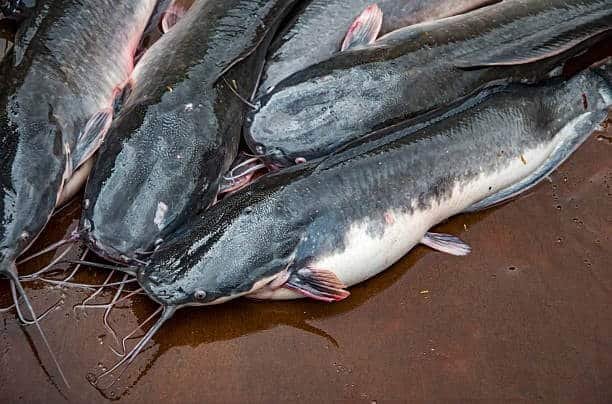
What is Catfish Farming?
Catfish farming is the practice of raising catfish in ponds for personal consumption or commercial purposes.
Catfish farming businesses exist because catfish is one of the most consumed fish in Africa, hence many farmers have resorted to raising them for commercial purposes.
How do I start a catfish farming business?
Now you know the basics, how do you put that to work to start a catfish farm? Below are 6 strategic steps on how best to start a catfish farm effortlessly;
1. Do a market survey of catfish farming businesses in your area
Having a pond and getting your fish is not just enough to kickstart a catfish business. You need to run a survey on what previous or current farmers are experiencing. This will help you set your objectives and plans to make more profit.
Here’s what to find;
- Level of catfish demand in your area.
- Current price of catfish.
- How many fish yields an X amount of money?
- What time of the year do catfish farmers make more sales?
- Target sales points: market women, hotels, restaurants, and merchants.
With this information, you wouldn’t have to grow more fish than necessary and always have ready fishes to sell.
2. Determine the size of your catfish farm:
The next factor to consider when starting a catfish farm is the size of the pond and the type of pond to construct. Starting a small-scale catfish farm will require a small size of pond. This will help the fishes interact easily and have access to feeds fresh before they go soggy.
On the other hand, if you’re planning for a large-scale farm, then you need to enlarge your tent and get a bigger pond. And for a big pond, you may need concrete or an earthen pond.
3. Determine the likely cost of starting a catfish farm of your intended size:
Once you’ve chosen the pond size, up next is to find the cost of setting it up. Here’s how to cost your catfish farm business;
- Cost of setting up the pond size you desire.
- Get the cost of the fingerlings that will fill your pond.
- Cost of catfish farm equipment.
- Estimate the cost of feed that will be served to them so they are ready for sale.
- Find out the cost of electricity for pumping water in and out of the ponds.
- If you will have staff, how much will you pay them?
Determining the likely cost of starting your catfish farming business will help you estimate your profit. if your calculations show that it is a worthwhile venture, then why not???
4. Know who your competitors are.
In evaluating your competitors in the business, you should be asking the following questions.
- Are there some catfish farmers in your market?
- Do you have a catfish farm in your area?
- Who do they sell to?
- Are they making profits?
- How much of the market demand are they satisfying?
- What aspect of your market is yet to be served?
- Is there any way you could attract more fish retailers to your farm?
- Could you have your farm where the cost of running it is reduced to sell at competitive prices?
- Is it possible to produce your catfish feeds yourself to sell them at a competitive price?
Putting all these into perspective will help you structure your catfish farm to make more profits.
5. Acquire knowledge, learn, and seek a mentor.
Ideally, starting a business can be a dicey moment. The fact is you need someone to lead you by the hand and guide you effectively.
While you can read some quality articles online like ours, it will be great if you truly practice what you’ve learned. A safe place to do that will be with a catfish farmer who will further guide you on what to do and what to avoid.
Nothing is stopping you from paying an expert to mentor you in the catfish farming business.
6. Make provisions for feeds and water.
Because catfish is by nature a freshwater animal, it will require you to change the pond water often. What this means is that you need to have a water source for a constant water supply.
Poor-quality water is enough to kill your catfish. Hence, we recommend drilling a borehole or getting water from a river.
About the feeds, catfish feeds should be rich in nutrients like lysine, arginine, and methionine. You can as well use local meals. A little now and then, add worms. As they grow, increase their feed ratio.
With these, you’re set to start farming catfish profitably.

What are the phases of catfish production?
Now, you’re a catfish farmer, what should you expect? Do the fishes just grow KABOOM! I’m sure you know they don’t.
Below is a classified mechanism of growth you should expect when raising catfishes;
Stage 1: Hatchery
This is a stage in fish farming where you collect eggs and sperm from the broodstock to hatch new fishes.
Stage 2: Fingerling Production
At this stage, you raise your baby catfish in the nursery to become fingerlings.
They usually become fingerlings at 6 weeks.
Stage 3: Melange Production
This is a transition from fingerlings to mélanges.
Catfishes become mélanges at 3 months weighing about 300-400g.
Stage 4: Table Size Production
At this stage of catfish farming, the fishes start to weigh about 500–700g, usually at 4 to 5 months from fingerlings.
Stage 5: Grow-out stage
At this stage, the fish clocks 1kg upward in weight. This is the stage where they are in their bigger sizes.
Usually, you can sell off the fish at this point.
Stage 6: Broodstock Production
If you don’t sell off at stage 5, probably the catfish is raised for a specific purpose. Such fish become a parent stock for the hatchery.
Usually, they are kept for one year plus.
Why Catfish Farming?
Fish farming is the fastest-growing animal husbandry business in Africa and the world as a whole. And generally, fish farmers either grow catfish or tilapia.
In Nigeria for instance, 2.66 million metric tonnes of fish are in demand and only about 1.4 million metric tonnes are produced every year. This high margin shows that we need to produce more fish to meet the growing demand.
As an entrepreneur, you already know that if you play your cards well, you will relieve a fraction of the margin and make more money.
What are the basic requirements to start a fish farm?
To kickstart a catfish farm, you need to read the following;
- Business plan.
- Recordkeeping.
- Marketing strategy.
- Good Parent Stock/Broodstock
- Water chemistry monitoring/test kits.
- Water: high quality, non-polluted water supply.
- Management: be a good manager of a management plan.
With these, starting a catfish farming business will be easy and breezy.
What systems are best to raise catfishes?
Raising your catfish requires you to adopt a mechanism that suits your environment and your budget as well.
The major systems of rearing catfish include;
- Flow-through.
- Earthen pond.
- Recycling system.
- Floating cage system.
- Concrete and Tarpaulin pond/Household system.
Frequently asked questions about catfish farming
What kind of catfish is ideal for farming?
For a commercial farmer, it’s ideal you grow hybrid catfish. Hybrids grow faster and convert feed more efficiently. So, when you go to buy fingerlings, ask for a hybrid especially, a blue catfish.
Is it ideal to start a catfish farm with a big pond?
The size of a pond is largely determined by how big you want to go in the business and your knowledge of the catfish business. For a starter, we recommend you go small first, at least for your first 3 sales, to know how best to handle the fish. Thereafter, you go big.
The major disadvantage to starting with a big pond is that if you`re inexperienced, starting big could be harmful and lead to losses.
What kind of water do catfishes thrive in?
Catfishes are freshwater animals, therefore they grow well in freshwater.
Also, the water must not be acidic.
To check the water acidity, you will need a PH meter to read the water acidity.
Read this article to learn more about water quality management in catfish farming.
How do I know my catfishes are sick or disease infested?
Because they live in water, it can be difficult to know when they are diseased.
However, there’s nothing an expert’s advice cannot fix.
Here are the symptoms to know your fishes are sick;
- Inactivity
- Frayed fins
- Bloated body
- Cloudy eyes
- Open sores
- Loss of color
- Difficult breathing
- Red streaks throughout the body
- Reddening or inflammation of the skin
What’s the best feed to feed your catfish?
You can either feed your catfish an imported or locally produced feed. Fish feeds are in pellets about 0.1 mm to 9 mm in size. But the pellet size changes with growth.
- Fingerlings eat 2 mm
- Melange 4-6 mm
- Table size 6 mm
- Grow out 9 mm
What’s the cost of starting a catfish farm?
The cost of a catfish startup farm depends on the location and country of residence.
However, the average estimate of a catfish farm with 500 fingerlings is 310,000 NGN.
- 500 fingerlings: N10,000
- Wooden (VAT) tank construction and labor: N150,000
- 4-months’ worth of feeding: N150,000
Summary
A catfish farm is not a herculean task provided you are ready and have all the necessary requirements.
Remember, hygiene is essential if you do not want to experience losses.
Let’s hear from you, how much did it cost you to start your catfish farm and location?
References
- Catfish Farming in Nigeria (Detail post + Free Practical Training on Our Farm)
- The Basics of Catfish Farming in Nigeria
- Top tips for improving African catfish farming
- Profitability of Catfish Farming in Nigeria
- How to Design and Construct a Fish Pond (With Calculations)
- What do catfish Eat? (9 Best Food to Feed Catfish)
- Water Quality Management in Catfish Farming
- This is Probably The Best Health Management Tips For Fish Farming Business
- How to Start a Catfish Processing and Packaging Business
- Make Money from Fish Farming Opportunities in Africa
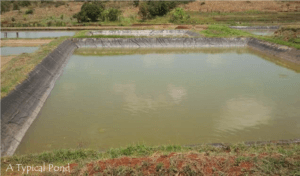
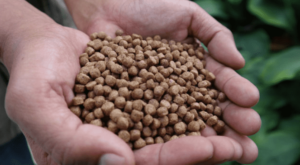



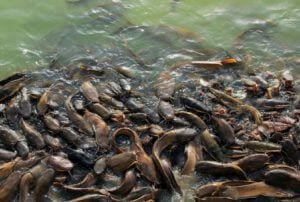
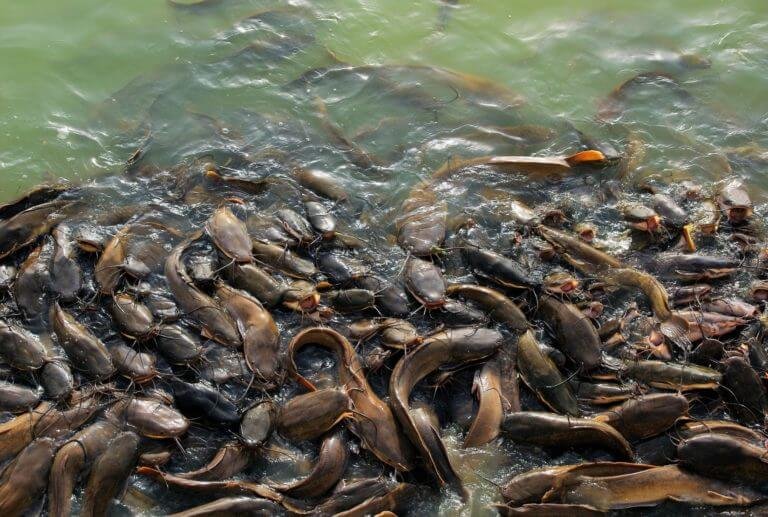




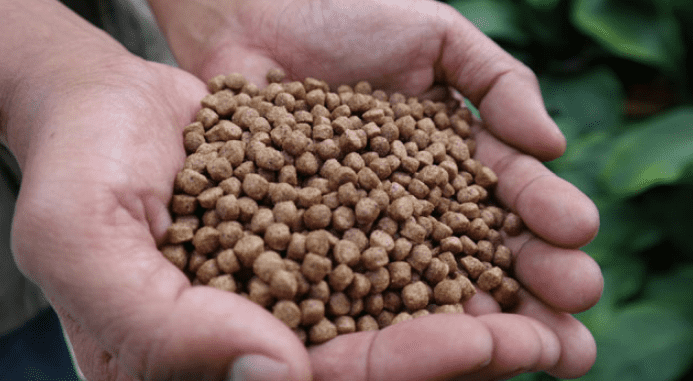
In fact I have enjoyed it all am I have developed interest but no capital to start. Cos i want to do it full-time job.
You need to maintain a side job to be able to afford the cost of running a catfish farming business.
Thanks for this lovely write up. I intend to start raising a few fingerlings to see how it will go before I go into large scale.
That’s great, Fatima. Starting your own catfish farm is great.
Sir,
I am highly bless, and surely all the advice will be fully implement as I prepare to setup my catfish farm.
My email, [email protected]
WhatsApp, +233-244764384
Regards
Mathew
Great work. Success to you as you set up your own fish farm.